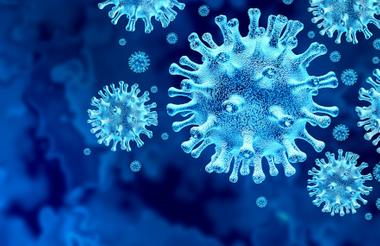When it comes to responsible investment, there are several areas of concern that have dominated decision-making. Climate change has been at the forefront over recent years, as have wider sustainability issues, and equity, inclusion and diversity. However, at L&G, another element has been added to the responsible portfolio mix: AMR.
“AMR stands for antimicrobial resistance, sometimes referred to as the silent pandemic,” says head of unit trust relationships at L&G Nancy Kilpatrick. “We believe that investors should know more about what it is and its potential impact, not only on humanity but also on long-term returns.”
Director of investment stewardship and health lead Maria Ortino sheds more light on what AMR is and why investors should be considering it as part of their responsible investment strategy: “AMR is the resistance by microbes to medication that has been developed. Microbes are viruses, parasites, bacteria and fungi. The antimicrobial medication has been developed to prevent and treat infections in humans, animals and plants. Over time, these microbes can become resistant to medication. This is a natural part of the evolutionary process, but it can be exacerbated by the misuse or overuse of antibiotics.
“AMR undermines modern medicine. We use antimicrobials, like antibiotics, to treat infections such as tonsillitis. Patients undergoing surgery may contract an infection which similarly needs to be treated with antibiotics. Those undergoing chemotherapy are immunocompromised and will often rely on antibiotics for any infection while undergoing treatment. If those antibiotics become ineffective, then it will have a direct impact on survival rates.”
According to figures published by the Lancet in 2022, there were 1.27 million deaths in 2019 directly linked to AMR globally, says Ortino. In the same year, the report suggests that 4.95 million deaths could be indirectly related to AMR. For comparison, John Hopkins Coronavirus Resource Center suggests that the cumulative number of deaths throughout Covid-19 was 6.88 million. “Furthermore, the Center for Global Development (CGD) released a study last year with a projection based on 2019 data that suggested that there could 38.5 million AMR-related deaths by 2050.”
Leading through stewardship
Not only are these worrying statistics for health prospects, the economic impact of a global pandemic on this scale would be devastating. “If we don’t take action on AMR, the projections by the CGD are that we could have a $1.7tn annual reduction in global economic output by 2050, not to mention the cost of AMR to healthcare expenses, which it estimates could rise to $159bn over the same period,” says Kilpatrick. “So, the figures speak for themselves, and action needs to be taken. The approach that we have adopted within the stewardship team is two-pronged, looking at the sectors that are involved, and engaging with policymakers.”
Fast facts
Top 5 charity manager*
£5.9bn** of charity assets
*Charity Finance Fund Management survey, November 2024
** Source L&G internal data as at 31 December 2024
Related articles












